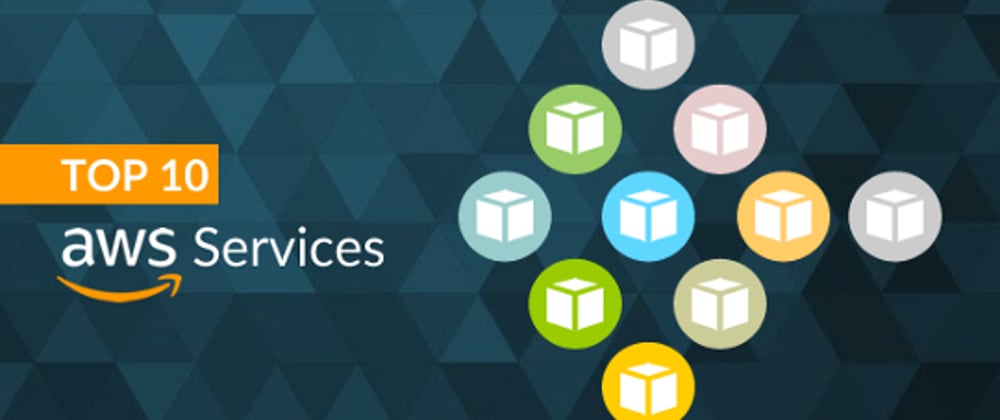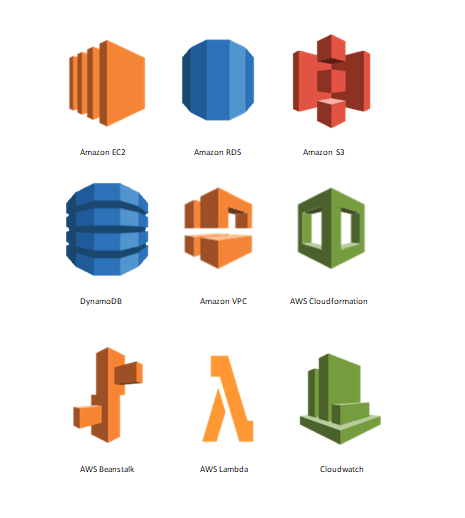There isn’t any question that AWS offers quite a number of services. In fact, it can get downright confusing. The services are classified into domain categories including network, content delivery, identity compliance, migration, storage, database, compute, management tools, and security. Nonetheless, it is difficult to determine the most widely-used services this year. If you want to migrate applications or even your database to the AWS cloud, here are the top 10 AWS services used by everyone in the industry.
My Background: I am Cloud , DevOps & Big Data Enthusiast | 4x AWS Certified | 3x OCI Certified | 3x Azure Certified .
- Amazon EC2
You don’t have to invest in costly physical services. Instead, you can create virtual machines with Amazon EC2 while managing other server features such as ports, security, and storage.
Spend less time maintaining your servers and more time on your strategic projects. Invariably, Amazon EC2 is one of the most popular and fastest-growing of the many AWS services.
- Amazon RDS
The Amazon Relational Database Service (RDS) was designed to make your infrastructure more user friendly. By using this AWS service, you can create dedicated instances of databases within minutes.
Not to mention, these instances can support multiple database engines including SQL Server, SQL, PostgreSQL, and more. Take your time back and stop spending hours maintaining your database servers. Let Amazon RDS do the work for you.
- Amazon Simple Storage Service (S3)
We are living in the age of big data. Some call it the incessant data deluge. As a result, we need more storage than ever before. Amazon Simple Storage Service (S3) has come to the rescue. It makes sense why this would be included in our list of the top 10 most used AWS services. It offers a highly secure and redundant file storage service.
It also stores data in three data centers within a specific region. And, there’s more. Amazon S3 also offers integrations to help prevent breaches by way of PCI-DSS, HIPAA/HITECH, and FedRAMP. You get data flexibility without almost zero latency.
- DynamoDB
So we’ve talked about SQL in the form of RDS, now let’s talk about NoSQL. DynamoDB is a managed serverless key value store, meaning once again you don’t worry about any underlying infrastructure, scaling, or maintenance.
What makes DynamoDB unique is that rather than paying for the provisioned size of your database, you instead pay for the throughput required (how many reads/writes per second you require — which can be scaled up or down manually or on-demand) and the storage used.
DynamoDB is schema-less, fast, resilient, and a great fit for any use case that wants a flat database hierarchy — it’s your default NoSQL storage for AWS. As with some of the others, it’s been around a long time and frequently pops up on many AWS certifications, though not to the same degree as RDS due to the decreased complexity.
- Amazon VPC
If you are ready to isolate your entire IT infrastructure from exposure, then the only way to do it is with Amazon VPS. This service creates a private virtual network that cannot be accessed by anyone or anything except the people and systems you authorize.
For instance, you can quickly create a VPC via the AWS Management Console. Immediately, route tables, security groups, IP ranges, and Subnets are created.
In addition, you get advanced security features such as network access control lists and security groups. If you need more security, you can create dedicated instances that are isolated at the hardware level from your other AWS accounts.
- AWS CloudFormation
AWS CloudFormation gives you an easy way to model a collection of related AWS and third-party resources, provision them quickly and consistently, and manage them throughout their lifecycles, by treating infrastructure as code.
A CloudFormation template describes your desired resources and their dependencies so you can launch and configure them together as a stack. You can use a template to create, update, and delete an entire stack as a single unit, as often as you need to, instead of managing resources individually.
You can manage and provision stacks across multiple AWS accounts and AWS Regions.
- AWS Beanstalk
Developers have to deal with enough headaches as it is. AWS Beanstalk was created to help developers manage website infrastructure. It’s difficult for developers to switch from development to maintenance at the drop of a hat. Yet, AWS Beanstalk offers autoscaling to ensure automatic updates of new software. And, this service runs automatically.
AWS Beanstalk really is a timesaver. It automates the setup, configuration, and provisioning of other AWS services such as EC2, RDS, and S3. Not to mention, the automated setup also helps to mitigate human error.
- AWS Lambda
When your server is inundated with an influx of requests, are you overwhelmed without knowing precisely how to respond? It’s quite possible your current server infrastructure cannot support the demands of your current speed of development.
In this case, AWS Lambda is designed to support any load of development. You handle the coding, and AWS Lambda will offer the right amounts of support and required resources while scaling to ensure your systems are no longer stretched past capacity.
- Cloudwatch
Once we’ve got resources and applications running in the cloud, we need to be able to observe them and access their logs. If something goes down we need to know what exactly happened. With CloudWatch we can gather logs from both managed services and our own applications running on ECS and EC2.
We can also use CloudWatch for event processing, and scheduling lambda events. So whether you’re deploying a service to AWS or scheduling event driven architecture, CloudWatch is crucial.
- AWS IAM
AWS Identity and Access Management (IAM). Unquestionably, security has a lot to do with access and what gets accessed. This service offers an effective fortification of sensitive data and AWS resources. It can also be used in conjunction with your organization’s 2FA and MFA. It’s just an additional layer of security that never hurts.
In conclusion
Thanks for taking the time to read this guide — I hope it helps! As mentioned these are my own personal views, and the applications are not ranked in any particular order.
This are the top 10 AWS Services used by everyone in the cloud industry.
If you feel that I have missed some of your favourite AWS services, feel free to contact me on LinkedIn.
You can view my badges here.
If you are interested in learning more about AWS then follow me on github.
If you liked this content then do clap and share it . Thank You .
There are two kinds of companies, those that work to try to charge more and those that work to charge less. We will be the second. ~ Jeff Bezos

















Top comments (0)